#traditional medicine
Text
"In response to last year’s record-breaking heat due to El Niño and impacts from climate change, Indigenous Zenù farmers in Colombia are trying to revive the cultivation of traditional climate-resilient seeds and agroecology systems.
One traditional farming system combines farming with fishing: locals fish during the rainy season when water levels are high, and farm during the dry season on the fertile soils left by the receding water.
Locals and ecologists say conflicts over land with surrounding plantation owners, cattle ranchers and mines are also worsening the impacts of the climate crisis.
To protect their land, the Zenù reserve, which is today surrounded by monoculture plantations, was in 2005 declared the first Colombian territory free from GMOs.
...
In the Zenù reserve, issues with the weather, climate or soil are spread by word of mouth between farmers, or on La Positiva 103.0, a community agroecology radio station. And what’s been on every farmer’s mind is last year’s record-breaking heat and droughts. Both of these were charged by the twin impacts of climate change and a newly developing El Niño, a naturally occurring warmer period that last occurred here in 2016, say climate scientists.
Experts from Colombia’s Institute of Hydrology, Meteorology and Environmental Studies say the impacts of El Niño will be felt in Colombia until April 2024, adding to farmers’ concerns. Other scientists forecast June to August may be even hotter than 2023, and the next five years could be the hottest on record. On Jan. 24, President Gustavo Petro said he will declare wildfires a natural disaster, following an increase in forest fires that scientists attribute to the effects of El Niño.
In the face of these changes, Zenù farmers are trying to revive traditional agricultural practices like ancestral seed conservation and a unique agroecology system.
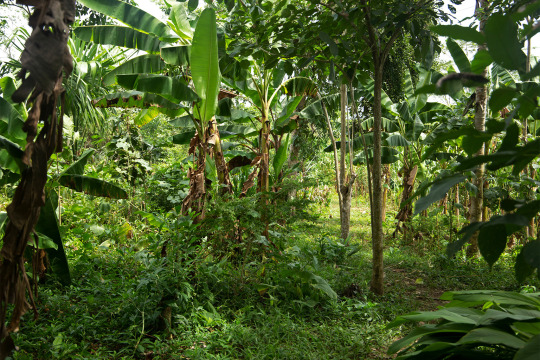
Pictured: Remberto Gil’s house is surrounded by an agroforestry system where turkeys and other animals graze under fruit trees such as maracuyá (Passiflora edulis), papaya (Carica papaya) and banana (Musa acuminata colla). Medicinal herbs like toronjil (Melissa officinalis) and tres bolas (Leonotis nepetifolia), and bushes like ají (Capsicum baccatum), yam and frijol diablito (beans) are part of the undergrowth. Image by Monica Pelliccia for Mongabay.
“Climate change is scary due to the possibility of food scarcity,” says Rodrigo Hernandez, a local authority with the Santa Isabel community. “Our ancestral seeds offer a solution as more resistant to climate change.”
Based on their experience, farmers say their ancestral seed varieties are more resistant to high temperatures compared to the imported varieties and cultivars they currently use. These ancestral varieties have adapted to the region’s ecosystem and require less water, they tell Mongabay. According to a report by local organization Grupo Semillas and development foundation SWISSAID, indigenous corn varieties like blaquito are more resistant to the heat, cariaco tolerates drought easily, and negrito is very resistant to high temperatures.
The Zenù diet still incorporates the traditional diversity of seeds, plant varieties and animals they consume, though they too are threatened by climate change: from fish recipes made from bocachico (Prochilodus magdalenae), and reptiles like the babilla or spectacled caiman (Caiman crocodilus), to different corn varieties to prepare arepas (cornmeal cakes), liquor, cheeses and soups.
“The most important challenge we have now is to save ancient species and involve new generations in ancestral practice,” says Sonia Rocha Marquez, a professor of social sciences at Sinù University in the city of Montería.
...[Despite] land scarcity, Negrete says communities are developing important projects to protect their traditional food systems. Farmers and seed custodians, like Gil, are working with the Association of Organic Agriculture and Livestock Producers (ASPROAL) and their Communitarian Seed House (Casa Comunitaria de Semillas Criollas y Nativas)...
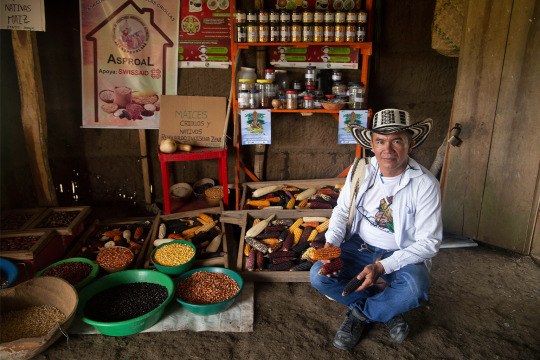
Pictured: Remberto Gil is a seed guardian and farmer who works at the Communitarian Seed House, where the ASPROL association stores 32 seeds of rare or almost extinct species. Image by Monica Pelliccia for Mongabay.
Located near Gil’s house, the seed bank hosts a rainbow of 12 corn varieties, from glistening black to blue to light pink to purple and even white. There are also jars of seeds for local varieties of beans, eggplants, pumpkins and aromatic herbs, some stored in refrigerators. All are ancient varieties shared between local families.
Outside the seed bank is a terrace where chickens and turkeys graze under an agroforestry system for farmers to emulate: local varieties of passion fruit, papaya and banana trees grow above bushes of ají peppers and beans. Traditional medicinal herbs like toronjil or lemon balm (Melissa officinalis) form part of the undergrowth.
Today, 25 families are involved in sharing, storing and commercializing the seeds of 32 rare or almost-extinct varieties.
“When I was a kid, my father brought me to the farm to participate in recovering the land,” says Nilvadys Arrieta, 56, a farmer member of ASPROAL. “Now, I still act with the same collective thinking that moves what we are doing.”
“Working together helps us to save, share more seeds, and sell at fair price [while] avoiding intermediaries and increasing families’ incomes,” Gil says. “Last year, we sold 8 million seeds to organic restaurants in Bogotà and Medellín.”
So far, the 80% of the farmers families living in the Zenù reserve participate in both the agroecology and seed revival projects, he adds."
-via Mongabay, February 6, 2024
#indigenous#ecology#agroforestry#agriculture#traditional food systems#traditional medicine#sustainable agriculture#zenu#indigenous peoples#farming#colombia#indigenous land#traditional knowledge#seeds#corn#sustainability#botany#plant biology#good news#hope#climate action#climate change#climate resilience#agroecology#food sovereignty
1K notes
·
View notes
Text
The degree to which herbal supplements are unregulated continues to appal me
And by “unregulated” I don’t just mean that there’s no medical proof that the supplement you take works (there isn’t)
I mean also that no one checks to see if any supplement says it contains what it says it contains
This is an industry that has happily killed hundreds of people who never knew why their bodies were dying because they didn’t even know supplements were unregulated. It’s so hard for medical doctors to trace symptoms back to any one distributor’s batch of “immune system booster.” People have died of failing organs and cancers whose mystery causes no one will ever find out. We have learned the reasons for some of these deaths, but many more we’ll never catch. Those people died confused and in pain due to the corporate greed of companies that still get to present themselves as “natural” and “healthy”
The supplements industry has so much blood on its hands but people still think it’s safe and that’s just monstrous
#you want to talk about toxins well those are the real deal#supplements#vitamins#health#natural medicine#herbal care#traditional medicine
55 notes
·
View notes
Text




I suppose if any wildflower can be said to embody the bounty and energy of summer, it must be black cohosh (Cimicifuga racemosa, or Actaea racemosa). Anyone who has grown up in Central Appalachia will instantly recognize and connect with the towering "fairy candles" of this woods-dwelling perennial in the buttercup family - some might even suggest a spiritual bond exists between the people of the mountains and the plant. This isn't surprising - black cohosh has a long and storied history as a medicinal herb, dating back to the Native American tribes, who used an extract from its root to treat everything from musculoskeletal pain to snake bites, and continuing with the European settlers, who used it to treat the symptoms of menopause. While there is little evidence from clinical trials indicating the plant's efficacy in treating menopausal symptoms, higher quality studies are being urged and may yet prove the plant's value in supporting female reproductive health. Irrespective of its potential contributions to medicine, black cohosh is the living spirit of Appalachia's summer woods, and one of the most spectacular wildflowers of North America.
#appalachia#vandalia#west virginia#wildflowers#flora#summer#favorite summer wildflowers#traditional medicine#herbal medicine#herbal remedies#black cohosh#fairy candles#black bugbane#black snakeroot#snake hill wildlife management area#cheat river canyon
137 notes
·
View notes
Text
Centuries-old remains of a disabled teenage girl, whose life was marked by spina bifida, have been unearthed in Brazil, revealing she was cared for by a caring and supportive community.
#disability#indigenous#Brazil#herbal medicine#traditional medicine#skeleton#ancient#history#ancient origins
67 notes
·
View notes
Text
This video was also fascinating to me because it shows some of the practices within Greek traditional (and thus, ancient, too - to a large degree) knowledge of nature and medicine. Religion plays a big part in the healing process, too, since many plants and various honey products are produced on our holy mountain, Athos.
Please, don't take this as medical advise. This is purely informative in nature only about cultural reasons. Always speak with a professional doctor about your health and possible treatments! That's not to say herbs and honey products don't have healing properties! But, just take care!
77 notes
·
View notes
Text
#self healing#medicinal herbs#medicinal plants#traditional medicine#viral infections#natural remedies
21 notes
·
View notes
Text
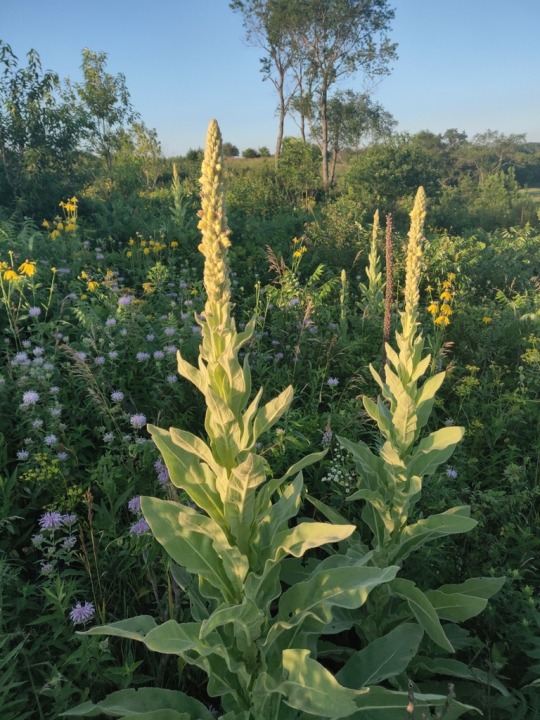
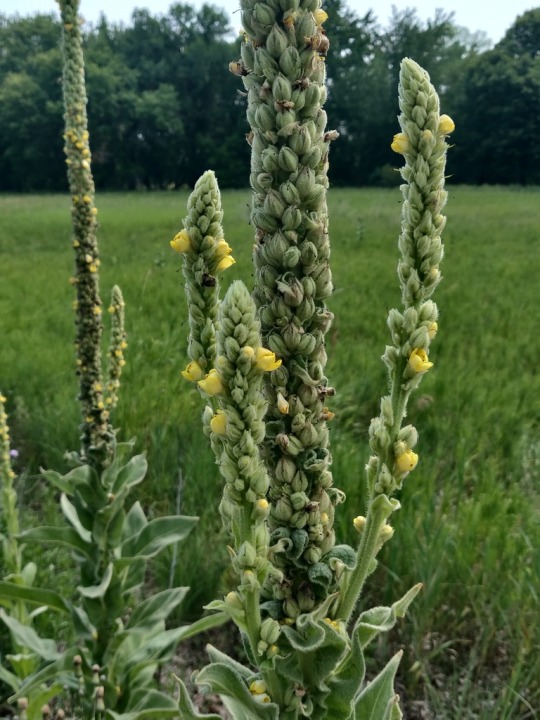

Great mullein, Verbascum thapsus
Native to Europe, Northern Africa, and Asia, and invasive throughout the United States and Australia. It has many traditional uses, including to treat lung ailments and skin irritations. It's also known as "natures toilet paper" due to its large and soft leaves.
#plants#foraging#traditional medicine#nature#naturalist#great mullein#forager#ecologist#ecology#biologist#biology#traditional ecological knowledge#north america#photography#mine#plant#botany#midwest#nature photography
20 notes
·
View notes
Text
13 notes
·
View notes
Text
🌿Canada Lettuce🌿
A year or two back, I decided I wanted to learn about the plants that grew in my yard. I was in a deep depression at the time and really needed something to do. I can't express how much this helped me, not just getting myself in a good routine, but helping me to appreciate the world around me. Now I walk down the street appreciating the plants I recognize.
So, first on the list is my absolute favorite- Canada lettuce. This stuff grows absolutely everywhere here in Mississippi.

MEDICINAL USES:
Sedative: Canada lettuce contains lactucarium, which has mild sedative properties. (It's stronger counterpart, Lacuca Virosa contains more of this and therefor is much more potent.)
It has been traditionally used to promote relaxation and alleviate mild cases of insomnia or restlessness.
Pain Relief: It is believed to have analgesic properties, helping to reduce pain and discomfort. Some people use it as a natural alternative for headaches or muscle aches. It's also qidely used by cutting the plant, excretion the white milk and rubbing it on stings or bites.
Antispasmodic: It may have antispasmodic effects, which can help alleviate muscle spasms and cramps.
Mild Diuretic: It has been used traditionally as a mild diuretic to help increase urine flow and eliminate excess fluids from the body.
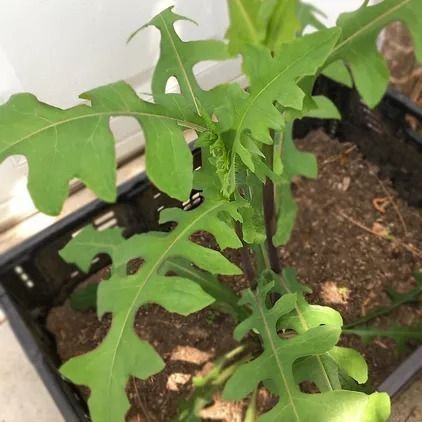
Magickal Properties
Dream Enhancement- It is associated with enhancing dreams and promoting vivid or lucid dreaming. Use it as an ingredient in dream pillows or sachets to encourage prophetic dreams or to induce a deeper sleep.
Divination Aid- It is used in divination rituals or meditation practices to deepen intuition. Its calming and sedative properties are believed to help gain a clearer connection to one's inner wisdom or devine guidance.
Protection- It can be used in spells or rituals to create a sense of peace, tranquility, and protection, both for yourself and your surroundings.
Spiritual Connection- Some believe that Canada lettuce can aid in spiritual journeying or astral travel by deepening states of meditation. You can use it to connect with deities as well.
Cleansing and Purification- It is sometimes used in purification rituals to cleanse negative energies or to create a sacred space for meditation and ritual work.
The best way to identify Lactuca Canadensis is by its leaves. It will have small flexible spikes along the bottom. The stems are usually purple when they're bigger, but as they're young it looks like a bundle of leaves. If the plant is allowed to reach full maturity, it will bloom a bright yellow flower at the top.
3 notes
·
View notes
Text
"In New Zealand, Pacific Island scientists have just been given a large grant to run a study trial on the use of the traditional kava preparation and kava ceremony for treating PTSD.
Believing it could help treat PTSD and other trauma in soldiers and veterans, police officers, and corrections facility staff, the two scientists want to revise the reputation of kava, which was damaged by a pharmaceutical rush into the product some years ago.
Dr. Apo Aporosa of Fijian descent on his mother’s side, and Dr. Sione Vaka from Tonga, have received $1 million from the Health Research Council to combine kava drink with the traditional ceremony of conversation.
“I’m so stoked that Health Research Council has faith in us as a team to do this critically important work,” Dr. Aporosa told the NZ Herald. “It’s likely we’re going to spend a million dollars to prove what traditional Pacific knowledge has been trying to tell Europeans for the last 200 years.”
Kava comes in many traditional names, all relating to the root of the Piper methysticum plant. Across the islands of the Pacific, the root was stirred in water and drank for its subtle euphoric, but also sedative properties. Accompanying the drink was a Talanoa or what Dr. Aporosa is referring to as “talk therapy,” but what was essentially a heart-to-heart conversation.
Their study will take two groups of people and give them both the whole kava drink plus the talanoa, referred to as “the full package” while another group will receive just the talanoa, and another group just the kavalactones—the active ingredient in the plant.
In 2009, the Cochrane Institute confirmed that kava was probably more effective than placebo for treating anxiety. At the time, pharmaceutical and supplement companies had quickly isolated kavalactones and sold them as a natural relaxant.
Like most indigenous populations, New Zealand’s Māori population suffers from higher rates of stress, trauma, and anxiety than the national average, and the Health Research Council believes that the Kava ceremony is the most sensible way to fulfill this unmet need.
“We do know that… talk therapy works for some PTSD cases,” Dr. Aporosa said, adding that talanoa is basically talk therapy, done while sitting on the floor rather than in chairs.
“We know that kava has relaxant properties, that kava is a natural anti-anxiety medication, so we combine those two elements in a culturally influenced space, and we’ve got something here that’s unique.”
Aporosa understands the situation better than most. Not only is he from Pacific stock, but he was a police officer who had to leave the force due to PTSD from the line of duty.
His experience traveling the world speaking with former military and police got him the Fulbright Scholarship to study the kava ceremony in Hawai’i, another island culture that uses the plant.
His hope is to show that it works significantly in the trial, and then release a free e-book about how to perform the ceremony and intervention, in order to ensure the largest number of people can access the knowledge of this traditional Pacific medicine."
-via Good News Network, July 5, 2023
#kava#traditional medicine#indigenous#pacific islander#ptsd#trauma#anxiety#therapy#talk therapy#medical research#alternative medicine#new zealand#pacific islands#fiji#tonga#good news#hope#mental health
114 notes
·
View notes
Text
Root of the Month for May 2023: Ragweed

Taxa(Family/Genus/species): Asteraceae/Ambrosia/artemissifolia or trifida
Folk Nomenclature: N/A
Common Name: Ragweed, Low Ragweed, Annual Ragweed, Ambrosia
Native Locality: Tropics & Subtropics of Southwestern USA & Northwestern Mexico; can be growing in fields, gardens, roadsides, etc. all across the U.S - most abundantly in the Eastern & Midwestern states.
Phenotypic Traits: Grows upright growing eaves that look almost fern-like, feathery and green. You will also notice that ragweed leaves look hairy. The flowers on the plant are also useful for ragweed identification. The flowers on ragweed are yellow and long, like streamers; similar to Goldenrod
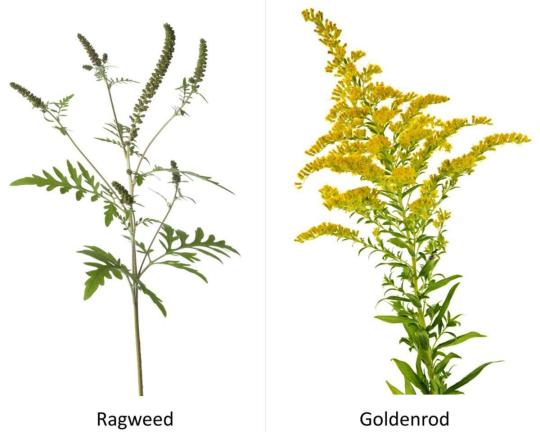
Parts Used: Leaves
Gender: Cold
Planetary Ruler: Venus
Elemental Ruler: Water
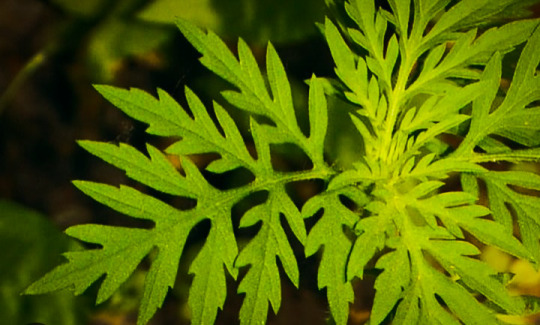
Traditional Usage in Rootwork: Used to drive away all fear. Useful for when a boost of courage is needed
Traditional Medicinal Usage: Soothes irritation from insect bites. Eases nausea, menstrual discomfort, skin infections, & fever. Can also be used a laxative. PLEASE NOTE: Ragweed pollen is a major seasonal allergy trigger.
🌟 FINAL copies of The 2023 Hoodoo's Calendar are available for purchase! Subscribe to the official e-newsletter for the latest updates & exclusive content access. https://thehoodoocalendar.square.site 🌟
#ragweed#rootwork#rootworkers#rootworking#juju#the hoodoo calendar#hoodoo#hudu#hoodoos#ambrosia#medicinal#traditional medicine#herbalism
19 notes
·
View notes
Text


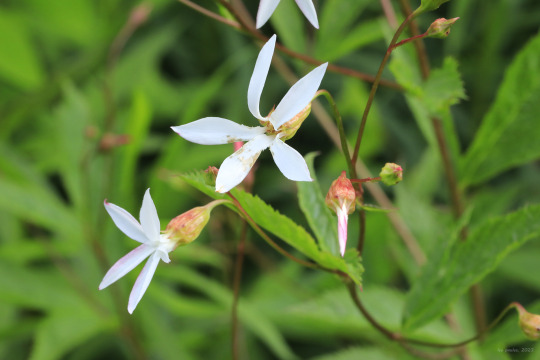


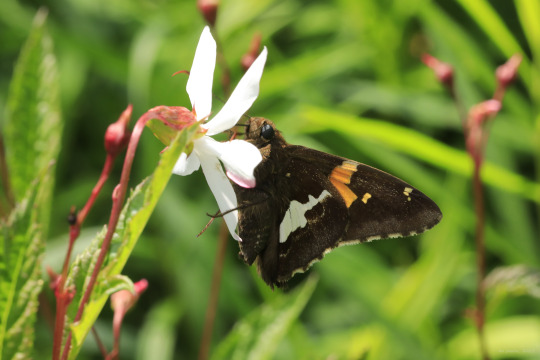
Bowman's root (Gillenia trifoliata), also known as Indian physic, is a perfectly stunning late spring perennial of Appalachia's upland woods, most often found at higher elevations. A member of the rose (Rosaceae) family, the plant has a long history of medicinal use, as both a laxative and emetic, first by Native Americans and then by white settlers. The trifoliate leaves are sharply toothed and alternate on red, branching stems. The white, star-shaped flowers have five sharply-flared petals of unequal length. A lover of partially sunny locations with dry to moist soil, Bowman's root is the perfect pollinator plant for a native wildflower garden and attracts skippers by the hordes, such as the silver-spotted skipper (Epargyreus clarus) above.
Photos from a secluded spot along the Highland Scenic Highway in the Monongahela National Forest.
#appalachia#vandalia#west virginia#wildflowers#spring#flora#allegheny mountains#monongahela national forest#highland scenic highway#june#bowman's root#indian physic#gillenia trifoliata#butterfly#lepidoptera#silver-spotted skipper#traditional medicine
65 notes
·
View notes
Text
Even in modern times, accusations of witchcraft are common in India. These accusations often lead to violence against women, a tradition campaigners are trying to end.
24 notes
·
View notes
Text
26 notes
·
View notes
Text
Từ bao đời nay, bà con ta đã biết dùng lá canh châu chữa thủy đậu cho con cháu. Bài thuốc dân gian này cho đến nay vẫn còn được lưu truyền lại và áp dụng rộng rãi.
#thuocdantoc#thuốc_dân_tộc#health#SkinDisease#benhthuydau#Chickenpox#lacanhchau#Sageretiatheezans#health and wellness#healthcare#wellness#health & fitness#health tips#traditional medicine
5 notes
·
View notes
Text
Cycle Syncing:
What to eat during your menstrual phase…
Protein: iron rich proteins should be the focus during your menstrual phase to replace lost vitamins and minerals
Veggies: cruciferous vegetables can help to regular your hormone production
Fats: saturated fats help to build back hormones after menstruation
Grains: carbohydrates paired with protein can help to stabilize your blood sugar and lift your spirits
Fruits: watery fruits can help you stay hydrated during this phase
Ex. Bone broth, beef, beets, broccoli, butter, yogurt, oats, rice, raspberries, oranges, lemons…

#healingjourney#health#self healing#therapy#traditional medicine#wellbeing#lunar cycle#cycle syncing
11 notes
·
View notes